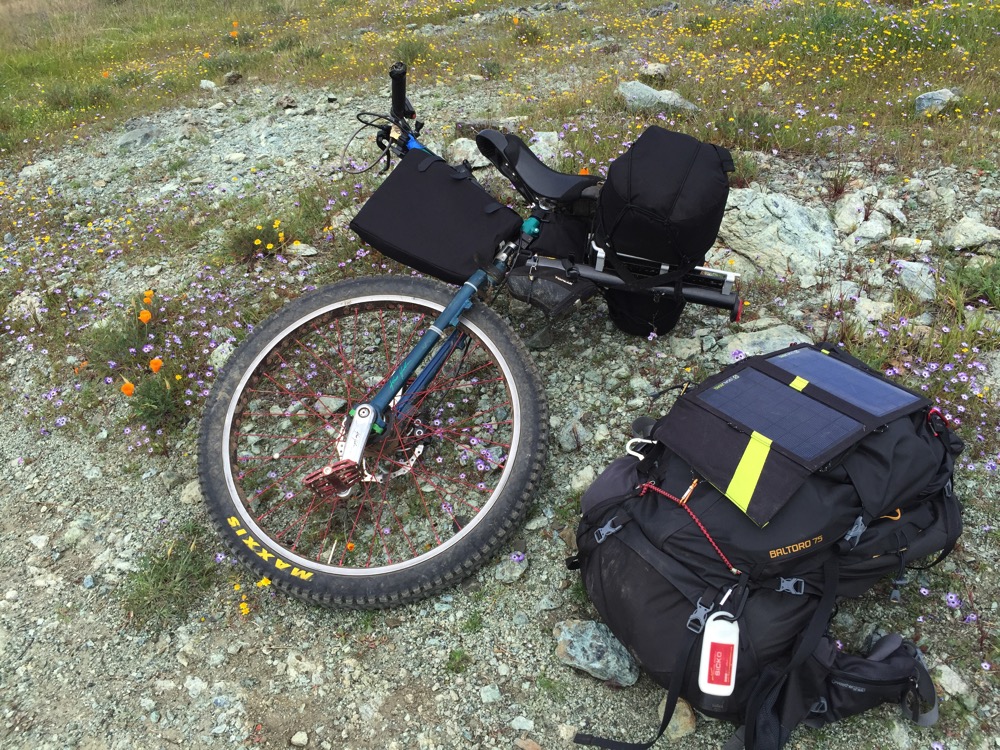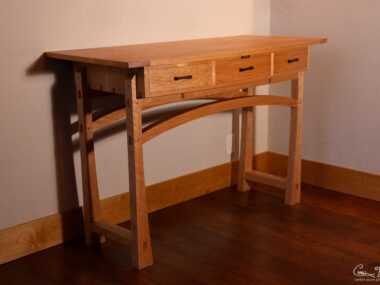Unipacking: Designing Panniers for a Unicycle: Prototypes
After a bunch of research, and making a new handlebar, I decided to start up on some prototype unicycle panniers and bags.
First I just strapped my tent under the front bar; this was a quick hack:
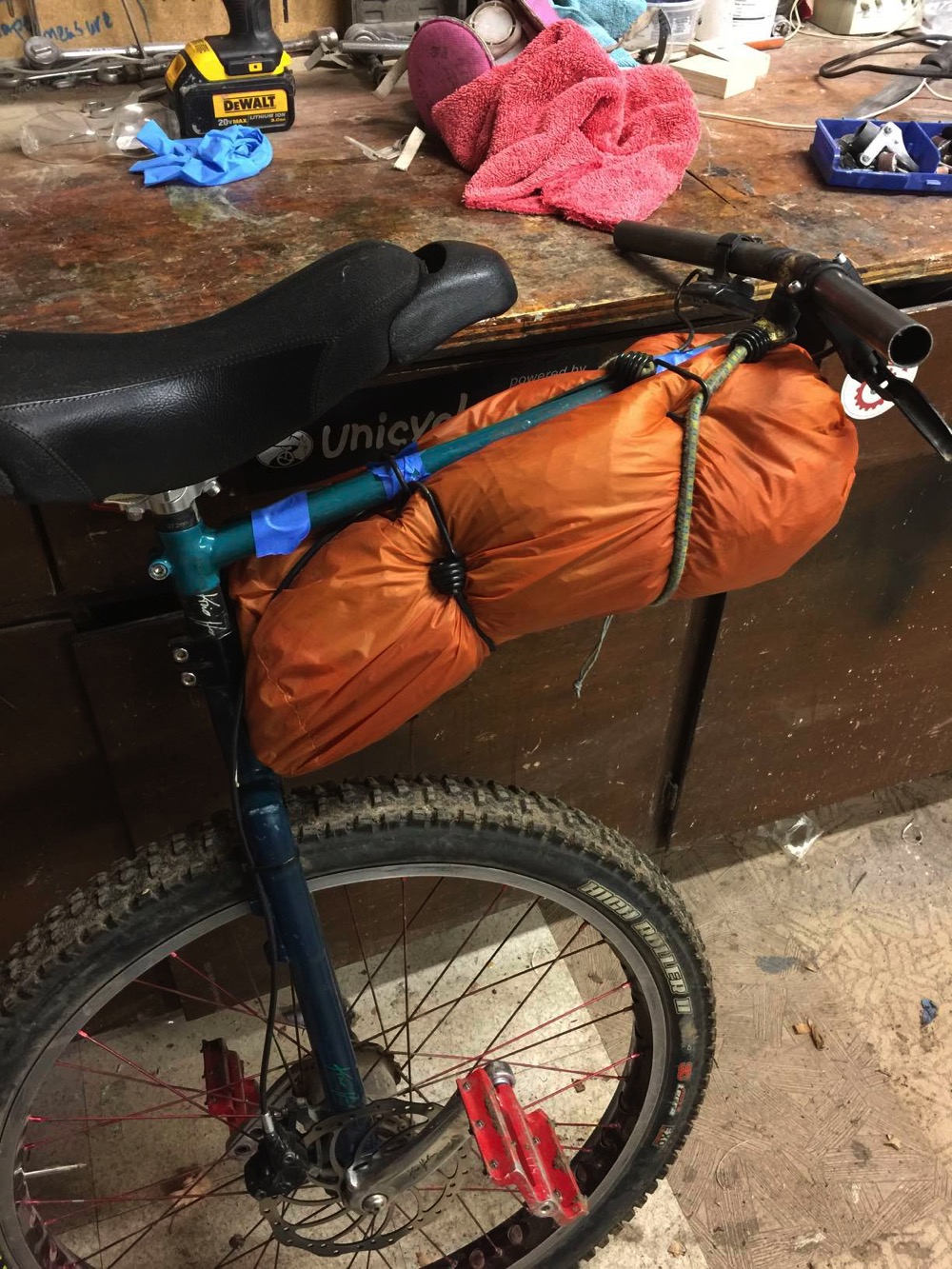
It won’t work at all as it rubbed way too much on my legs.
Next came some cardboard prototypes:
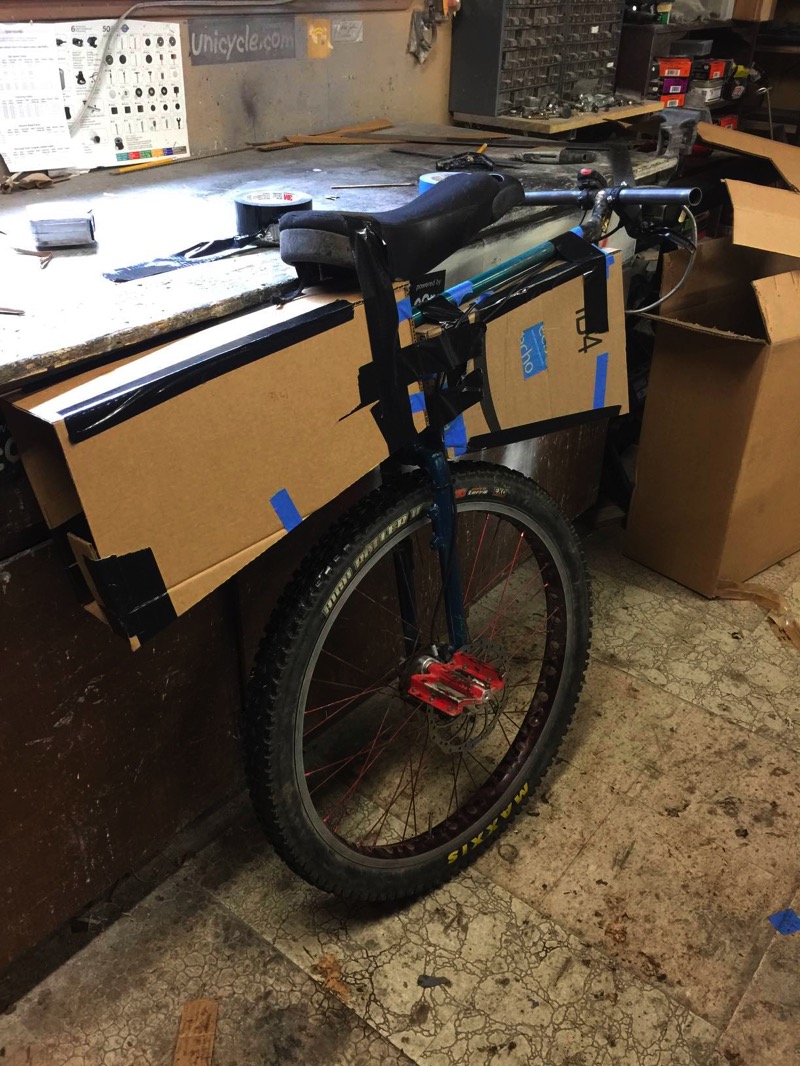
This allowed me to get a general feel for what sizes would work.
What material should I use to make the bags? At first I went to a local Beverley’s Fabric store, but this left me empty handed. I did some internet searching and realized that most bags are made out of a waterproof canvas and is rated via a denier. A 600 denier fabric seemed to be tough enough based on what I was seeing other bags made out, so I bought some on eBay for about $32 (with shipping). I got a TON of fabric; enough for 4 or more bags. Once I got the fabric, I started cutting it out and sewing it together roughly based on the size of my cardboard boxes:
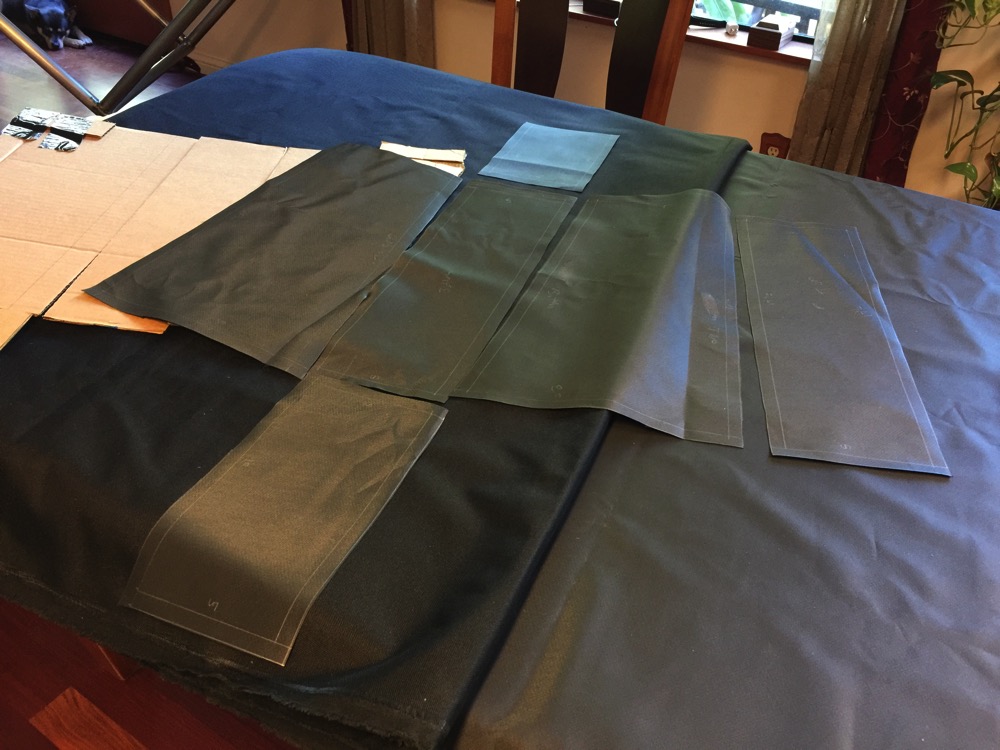
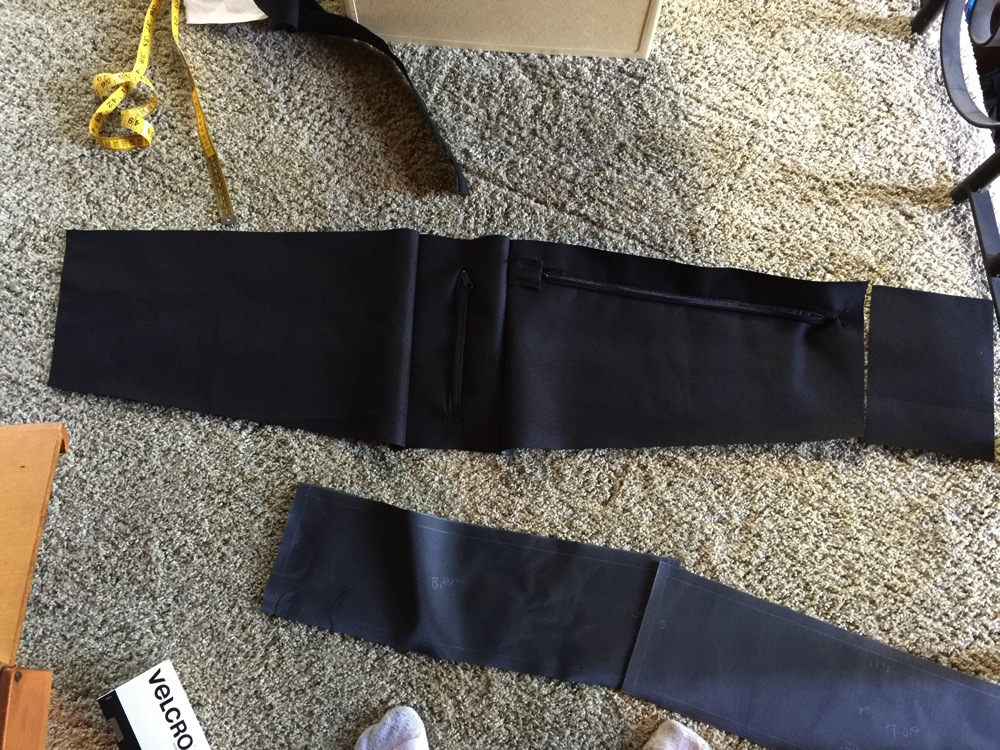
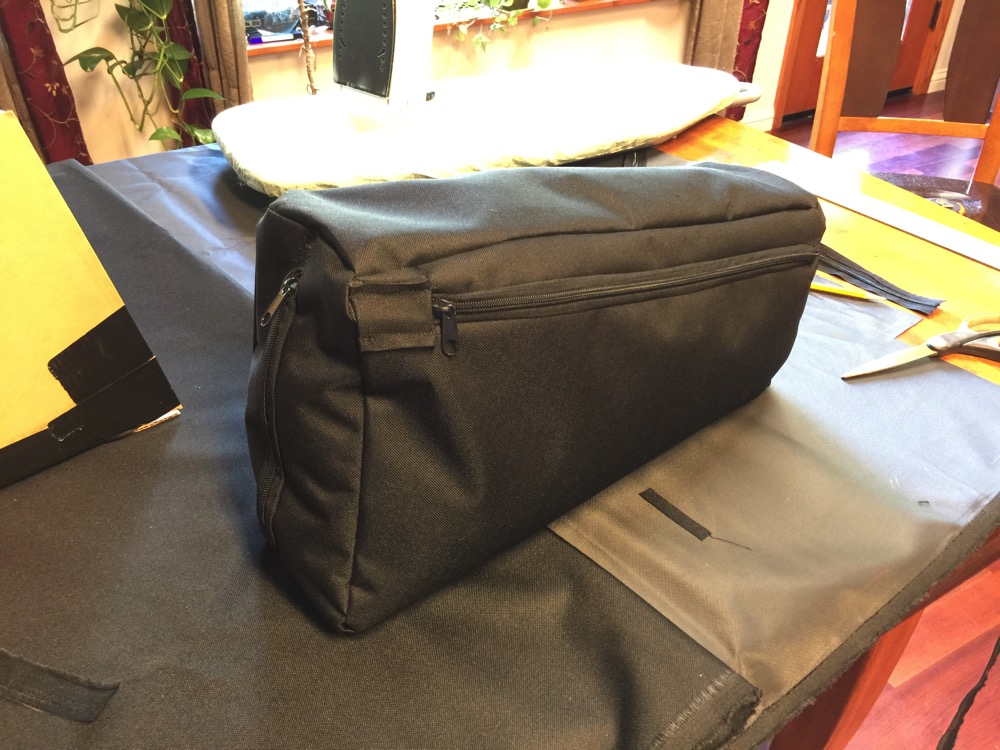
I had decided to make the larger rear bag first. The next part was to figure out how to hang it behind the unicycle. I was planning on welding up a rack, and I started down that process but quickly realized it would take me too long. I wanted to get going soon! So I went to REI to scope out what they had and ran across some racks:
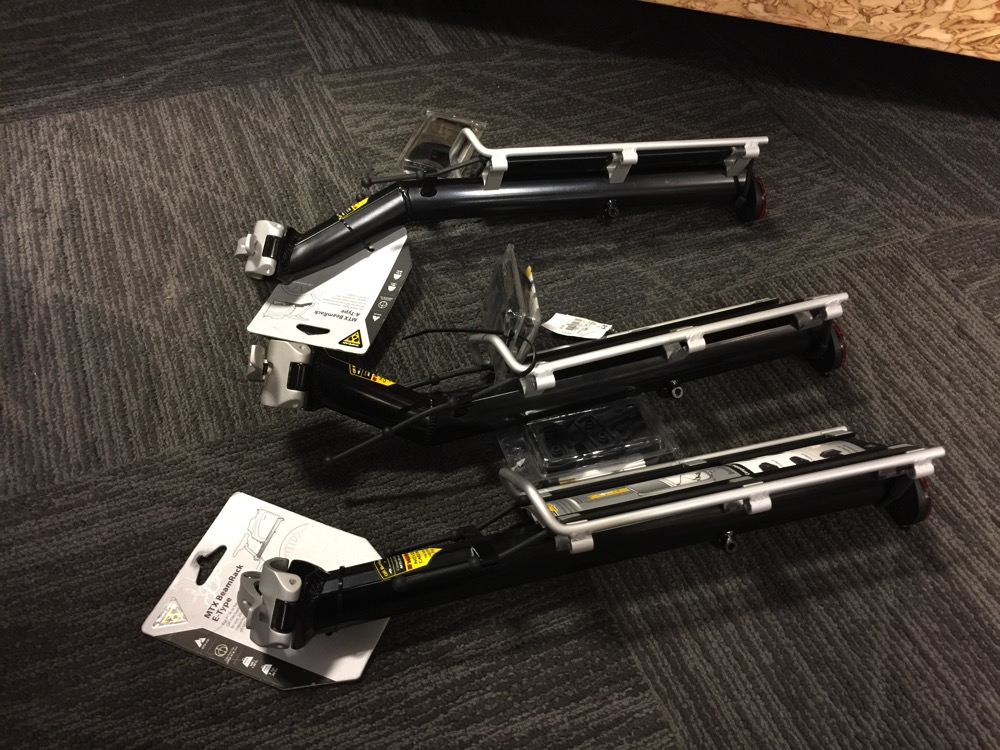
I initially bought the first one, but it was angled too high. I then went with the 3rd one (E-type) which has no angle at all. In hindsight, the second (A-Type) might have been “just right” as it would have dropped the sack a little lower. I later learned that Jamey also has the same rack! You can easily buy a variation of these racks on Amazon:
While I was there I also bought the Topeak MTX Trunk Bag:
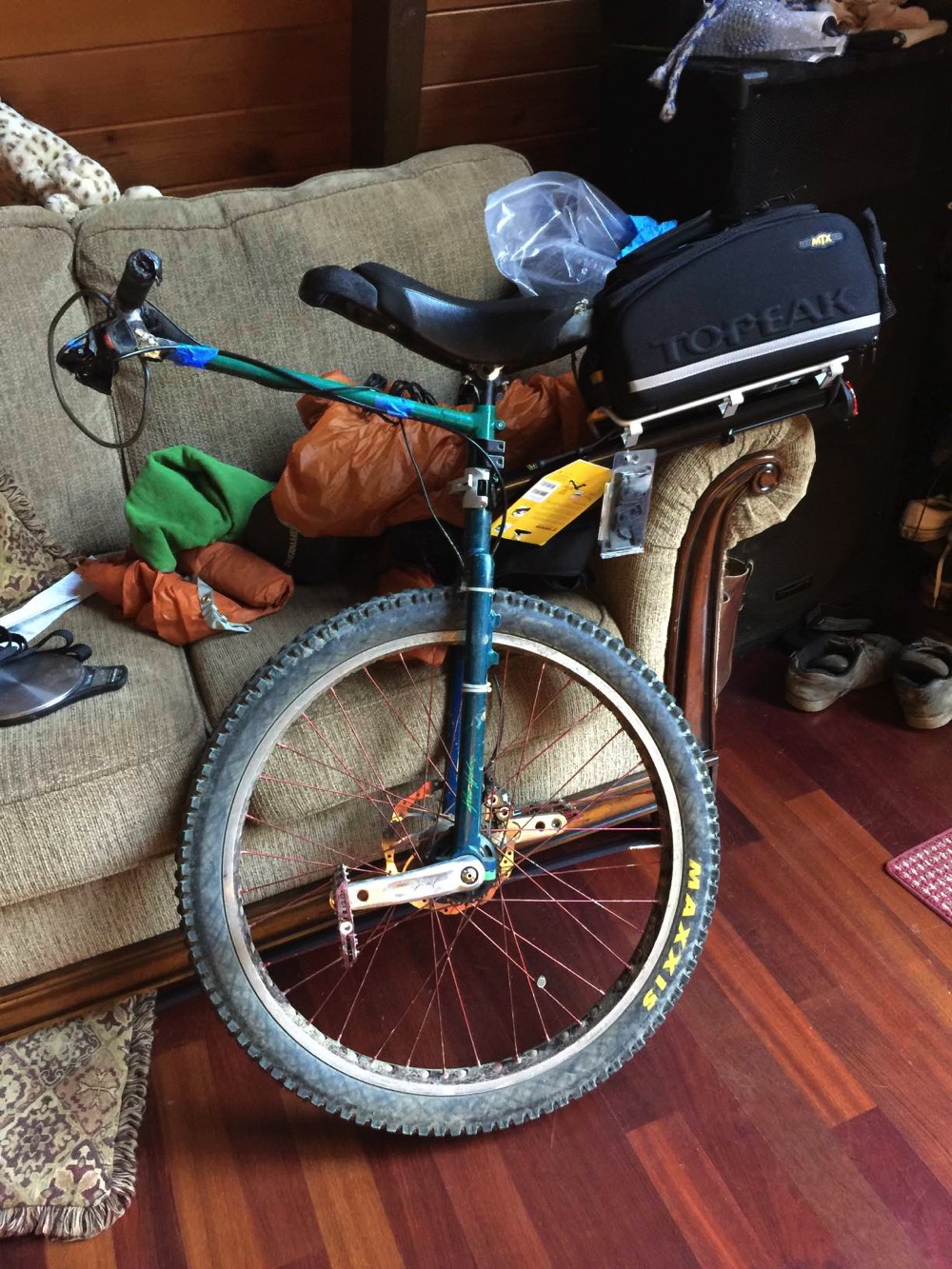
The cool thing about this bag is that it has both a top section and panniers that drop out:
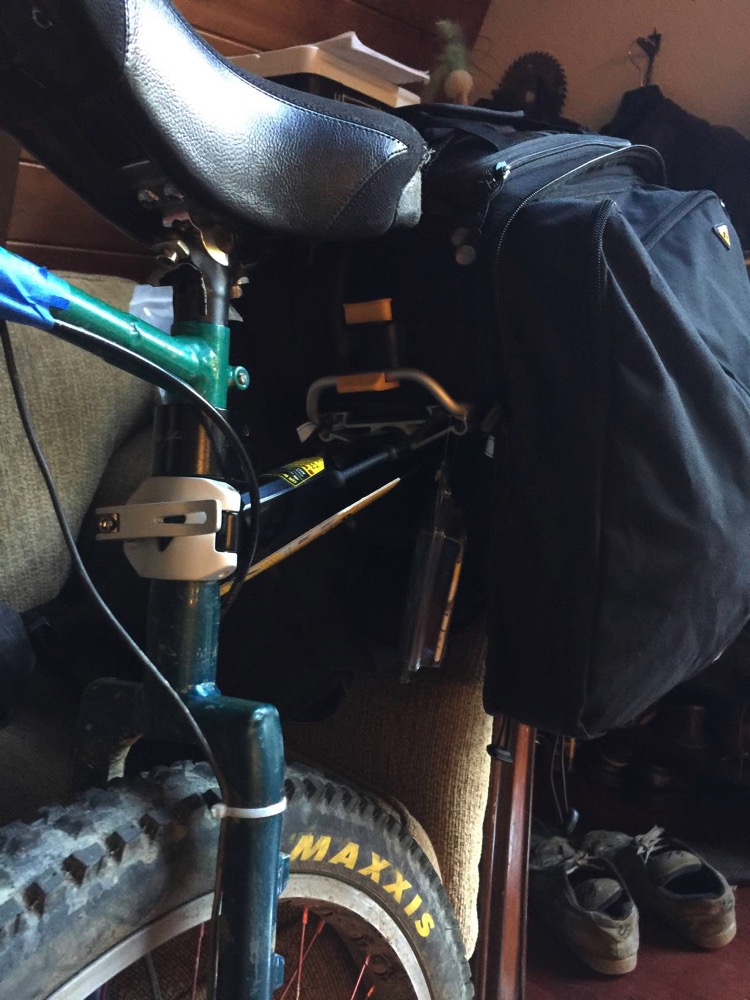
However, my test riding around my deck proved that this wouldn’t work. The panniers pulled the unicycle back too much, and swayed side to side. The sway made the uni really hard to ride. I ended up returning them to REI. The Topeak rack is nice, and I’m sticking with that. You can see how it is attached in the above picture; right below the main seat post clamp. I had to push the seat post clamp up a bit to allow it to fit; I might trim it a bit to make it fit better, and get a thinner seat post clamp. But for now, it is working pretty well.
So, my text feat was to figure out how to load it up. I initially went with this approach:
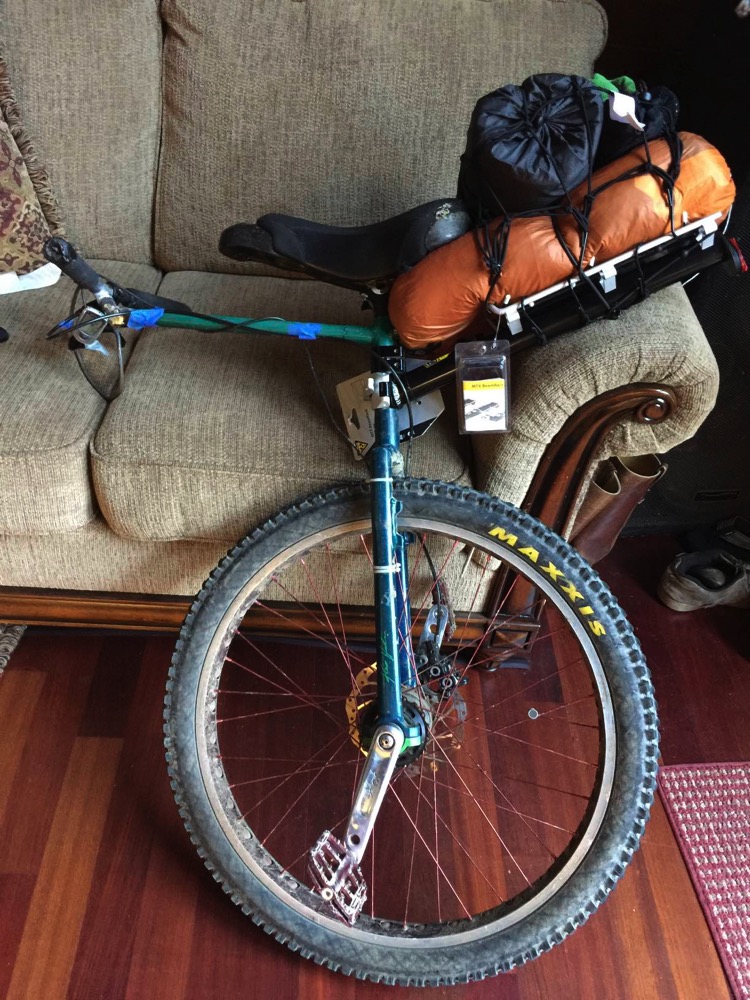
On the rack is my tent (orange), sleeping pad (black), towel (green, mostly hidden) and water filter (black, top rear). The rack is pointing too high; I really would like it to be more horizontal to keep the weight lower to the ground. The high angle might actually be okay if I eventually go with the underneath mounting system with the sample pannier I made. Some practice riding around my house proved the this is a viable approach to unipacking. It wasn’t too hard to mount, although a touch rear heavy. I really needed a front pack to help balance it out.
So, I sewed together a front pack that would velcro to the handlebar and frame:
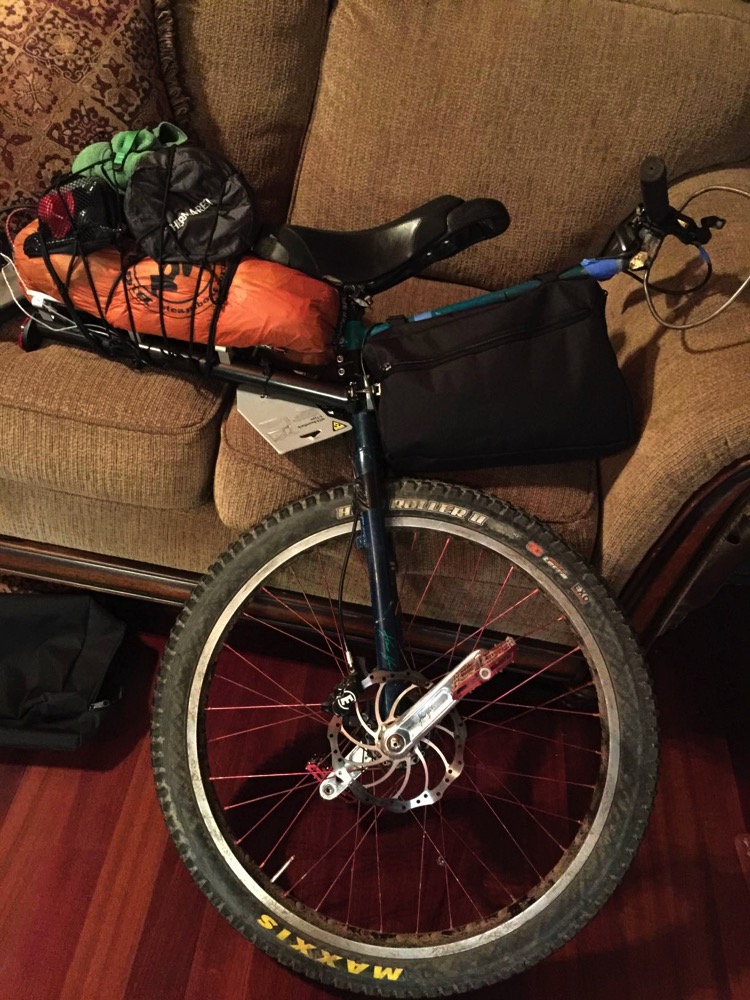
I stuffed it full of clothes and did a test ride of around 7 miles on the Jones Trail in Los Gatos while wearing my backpack:
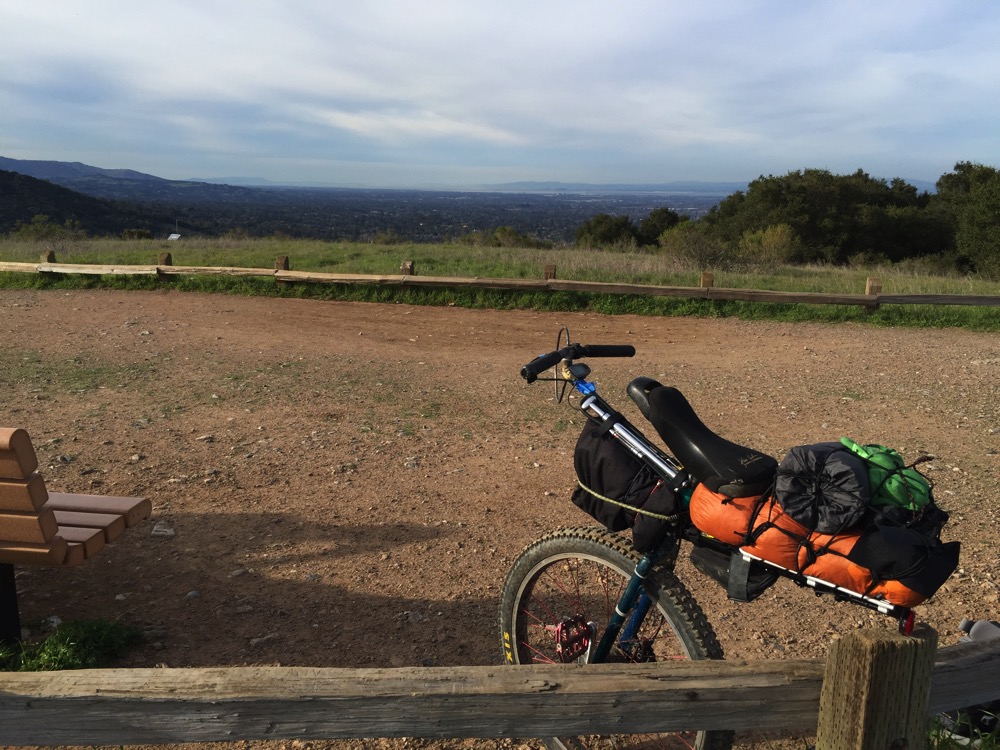
I quickly realized that the front pack was too wide; my legs rubbed on it and it wasn’t pleasant. I looked around my house for something to make the bag stiff on the sides. If it held its shape it wouldn’t rub so much on my legs due to bulging outwards from clothes. I had an old piece of laminate kitchen tabletop veneer laying around; it was thin, strong and easy to work with. So, I cut out some sides to make the bag stiff:
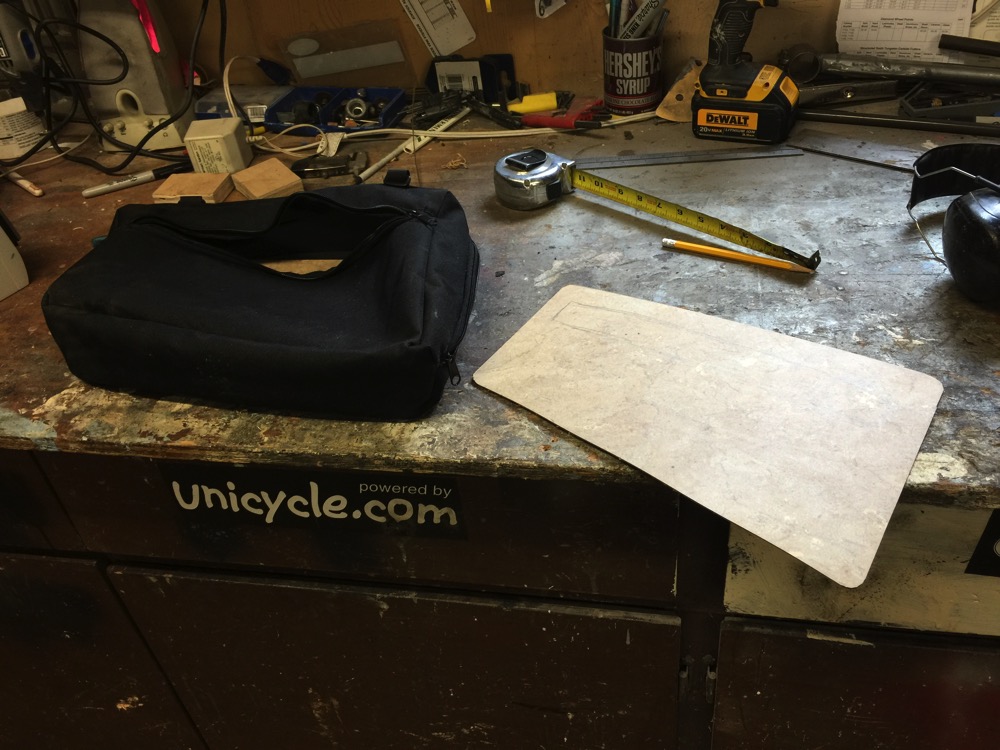
This stuff works great! Later I cut out some holes in it to save some weight.
The next thing I was worried about was my tent bag getting scuffed up. It is a lightweight bag and would easily get destroyed if I crash a few times. I’m bound to crash, and I want my tent to remain in one piece. Lexi had a great idea: Just sew a round bag replacement out of the 800 denier material!
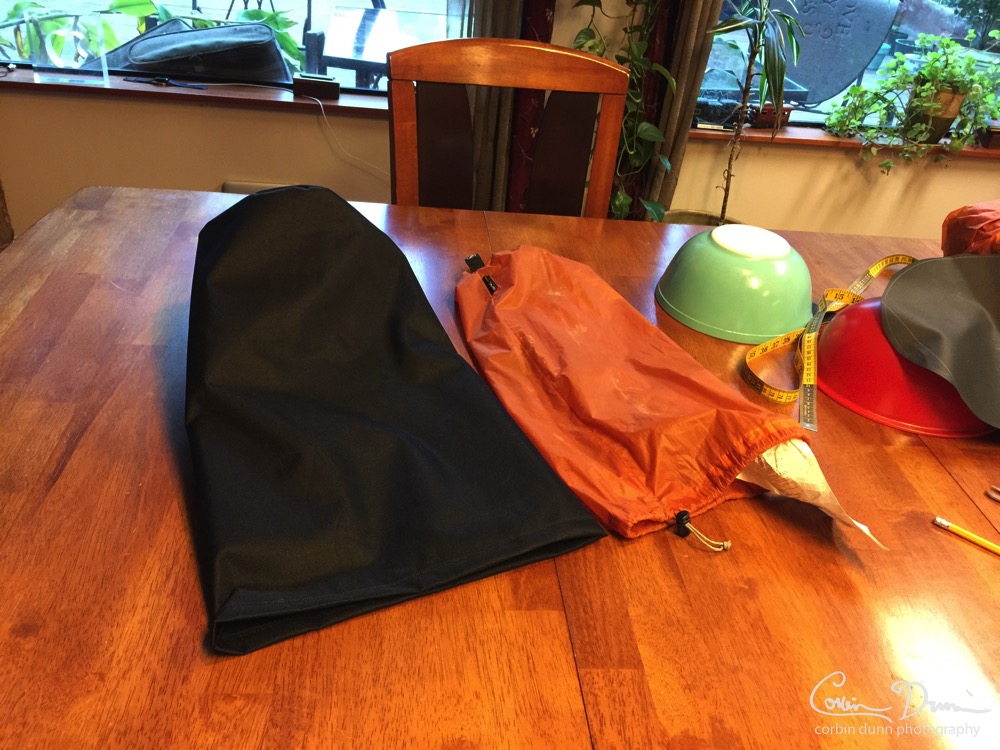
The black bag has a nice cinch strap just like the old bag. It weights quite a bit more, but it is a LOT more durable. I stuff the tent into this bag, along with my sleeping bag, sleeping mat, and some clothes! Unfortunately, I realized that running it lengthwise against the rack was making the unicycle too rear heavy. So, instead of strapping it parallel with the rack, I strapped it perpendicular:
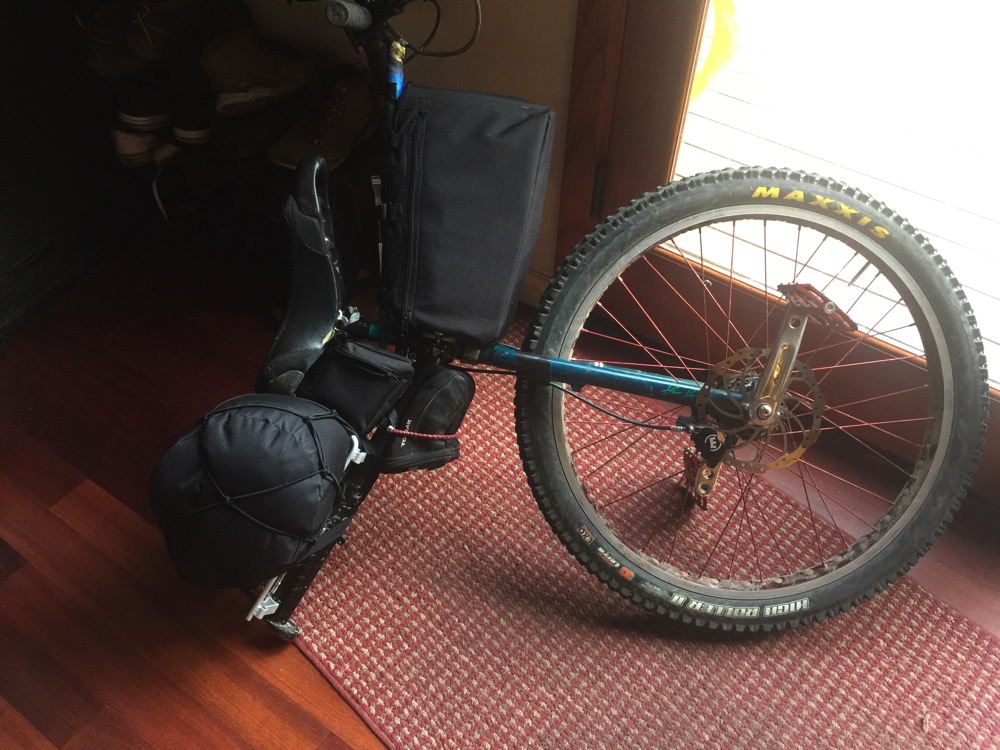
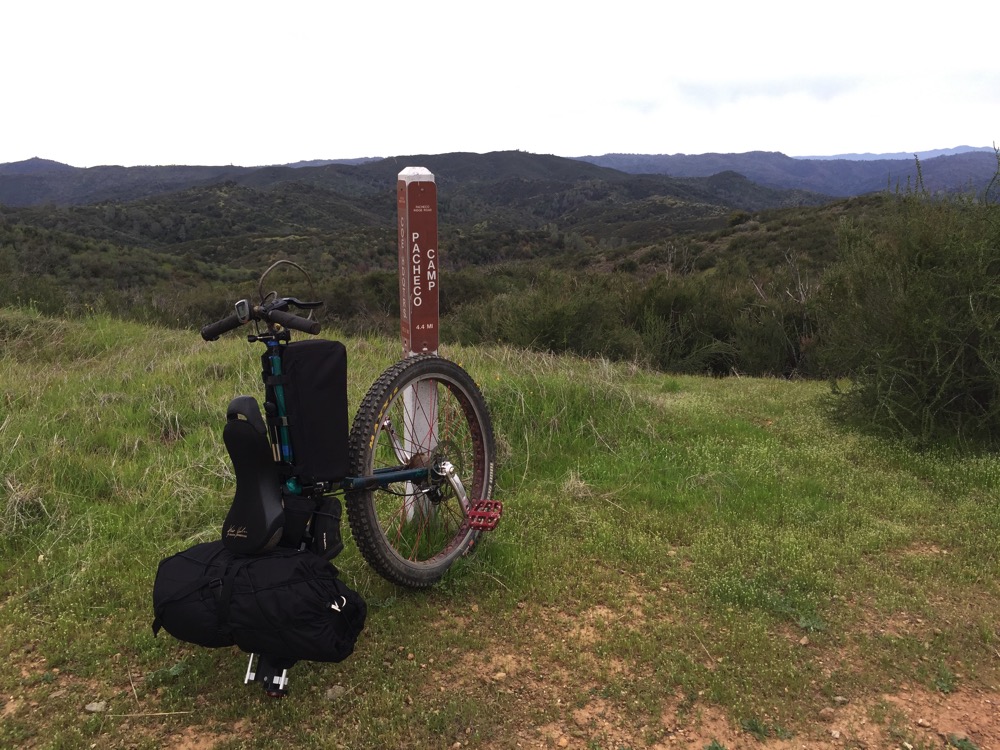
This pulls more of the weight closer to the center of the unicycle and makes it a lot more stable. It is more difficult to mount, but I quickly adapted to doing a slight side push. Eventually I’ll make some videos of me doing this…
The last bit I did was to sew up a tiny little bag to take up some empty space under the seat:

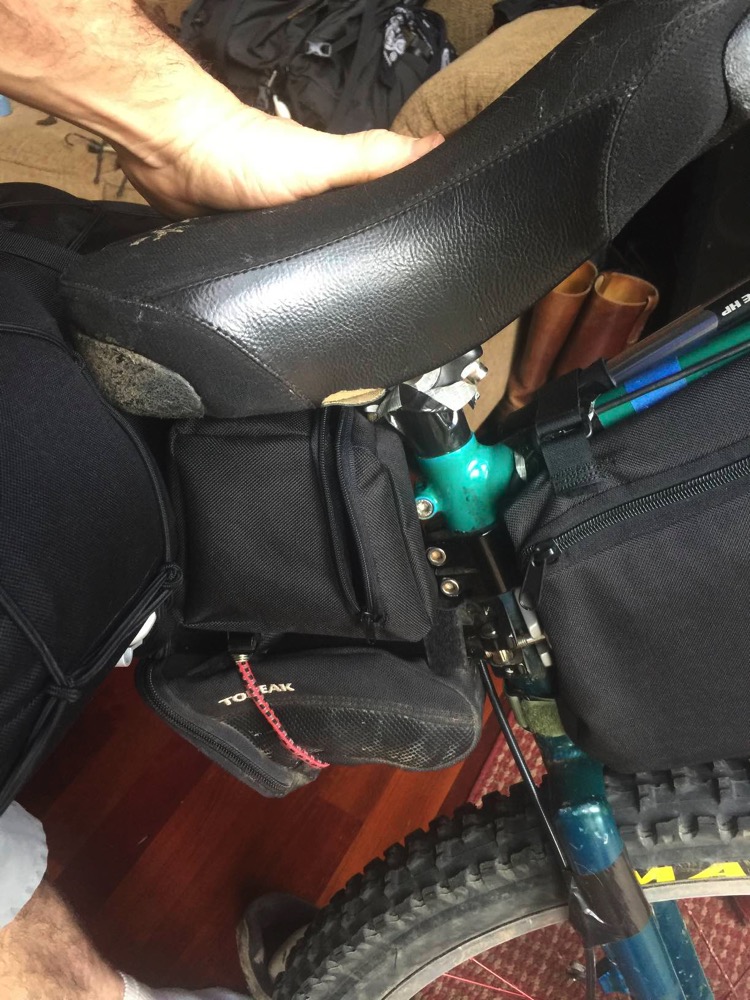
The little bag is big enough to stuff a spare tube and a few bars into it. In the above picture you can also see a standard Topeak under-seat bag that I had on my road bike; I just sewed on an extra strap and put it underneath the uni to hold my basic tools.
That is it! This is my current setup for the Arizona Trail via a KH26 mountain unicycle:
